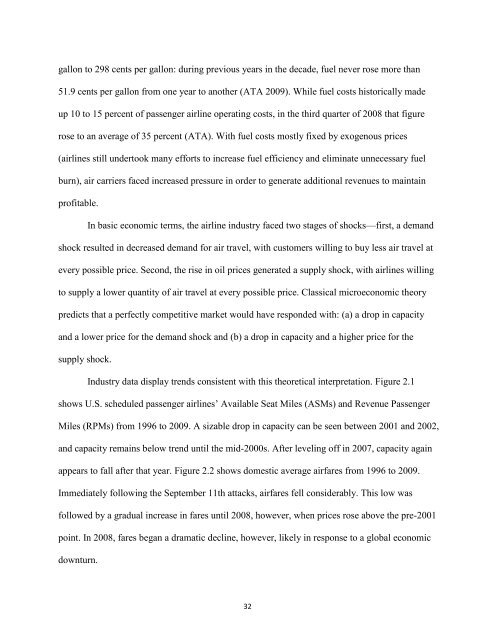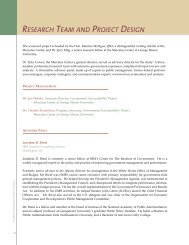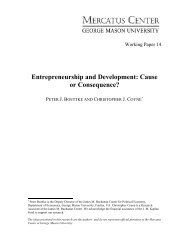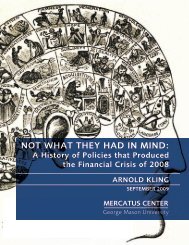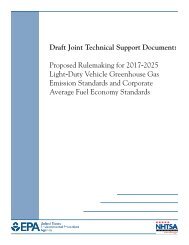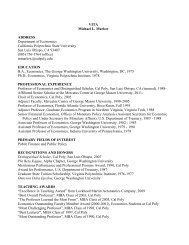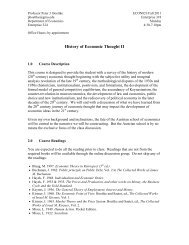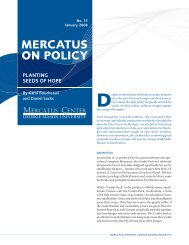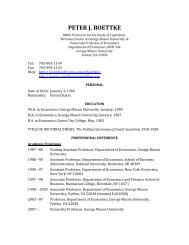A-La-Carte Pricing in the Airline Industry - Graduate Student ...
A-La-Carte Pricing in the Airline Industry - Graduate Student ...
A-La-Carte Pricing in the Airline Industry - Graduate Student ...
You also want an ePaper? Increase the reach of your titles
YUMPU automatically turns print PDFs into web optimized ePapers that Google loves.
gallon to 298 cents per gallon: dur<strong>in</strong>g previous years <strong>in</strong> <strong>the</strong> decade, fuel never rose more than51.9 cents per gallon from one year to ano<strong>the</strong>r (ATA 2009). While fuel costs historically madeup 10 to 15 percent of passenger airl<strong>in</strong>e operat<strong>in</strong>g costs, <strong>in</strong> <strong>the</strong> third quarter of 2008 that figurerose to an average of 35 percent (ATA). With fuel costs mostly fixed by exogenous prices(airl<strong>in</strong>es still undertook many efforts to <strong>in</strong>crease fuel efficiency and elim<strong>in</strong>ate unnecessary fuelburn), air carriers faced <strong>in</strong>creased pressure <strong>in</strong> order to generate additional revenues to ma<strong>in</strong>ta<strong>in</strong>profitable.In basic economic terms, <strong>the</strong> airl<strong>in</strong>e <strong>in</strong>dustry faced two stages of shocks—first, a demandshock resulted <strong>in</strong> decreased demand for air travel, with customers will<strong>in</strong>g to buy less air travel atevery possible price. Second, <strong>the</strong> rise <strong>in</strong> oil prices generated a supply shock, with airl<strong>in</strong>es will<strong>in</strong>gto supply a lower quantity of air travel at every possible price. Classical microeconomic <strong>the</strong>orypredicts that a perfectly competitive market would have responded with: (a) a drop <strong>in</strong> capacityand a lower price for <strong>the</strong> demand shock and (b) a drop <strong>in</strong> capacity and a higher price for <strong>the</strong>supply shock.<strong>Industry</strong> data display trends consistent with this <strong>the</strong>oretical <strong>in</strong>terpretation. Figure 2.1shows U.S. scheduled passenger airl<strong>in</strong>es‘ Available Seat Miles (ASMs) and Revenue PassengerMiles (RPMs) from 1996 to 2009. A sizable drop <strong>in</strong> capacity can be seen between 2001 and 2002,and capacity rema<strong>in</strong>s below trend until <strong>the</strong> mid-2000s. After level<strong>in</strong>g off <strong>in</strong> 2007, capacity aga<strong>in</strong>appears to fall after that year. Figure 2.2 shows domestic average airfares from 1996 to 2009.Immediately follow<strong>in</strong>g <strong>the</strong> September 11th attacks, airfares fell considerably. This low wasfollowed by a gradual <strong>in</strong>crease <strong>in</strong> fares until 2008, however, when prices rose above <strong>the</strong> pre-2001po<strong>in</strong>t. In 2008, fares began a dramatic decl<strong>in</strong>e, however, likely <strong>in</strong> response to a global economicdownturn.32


